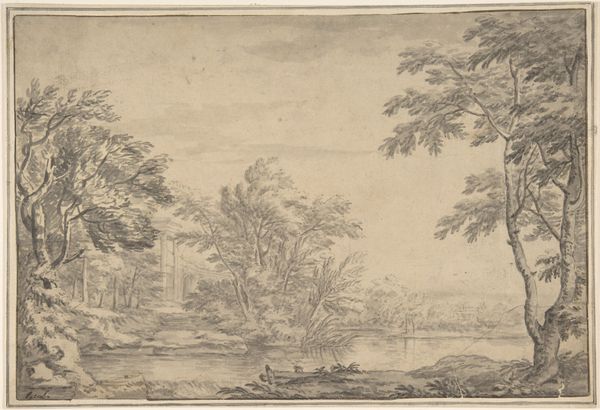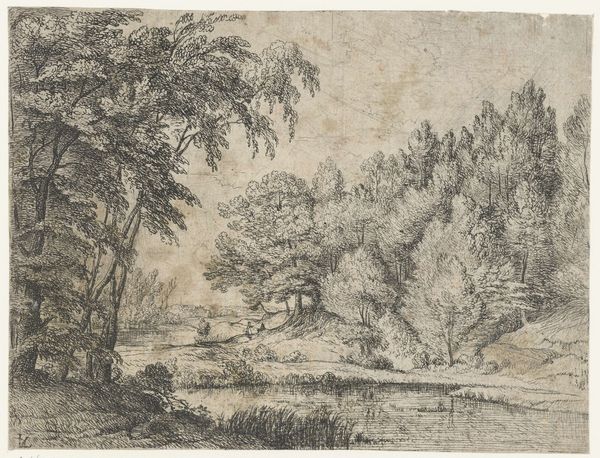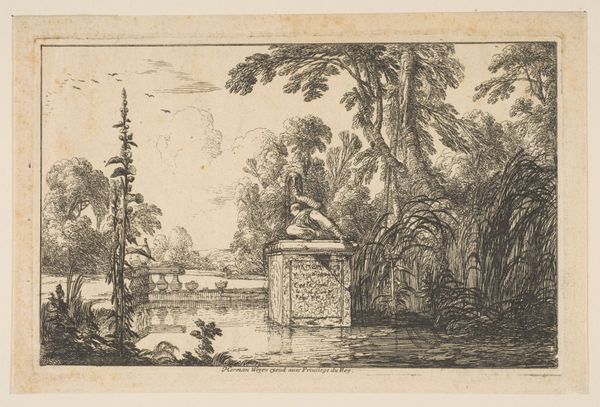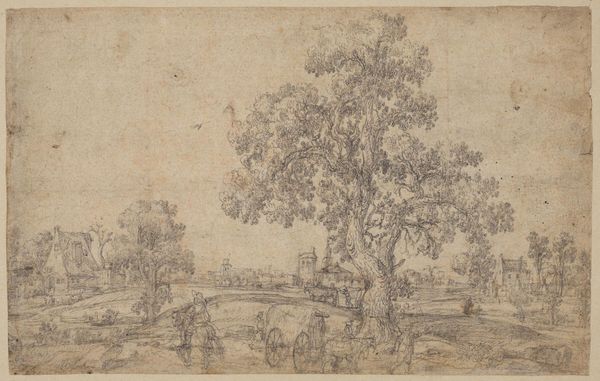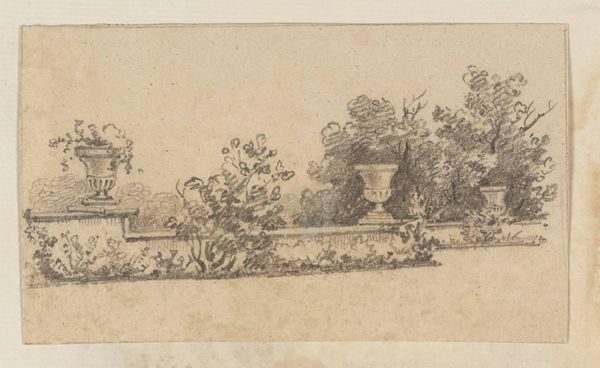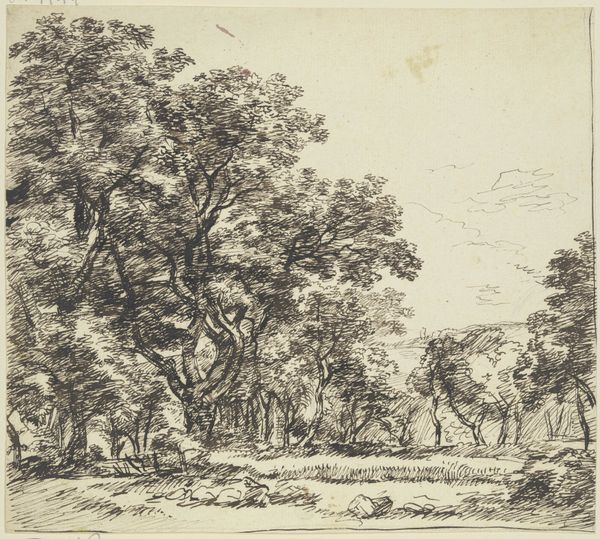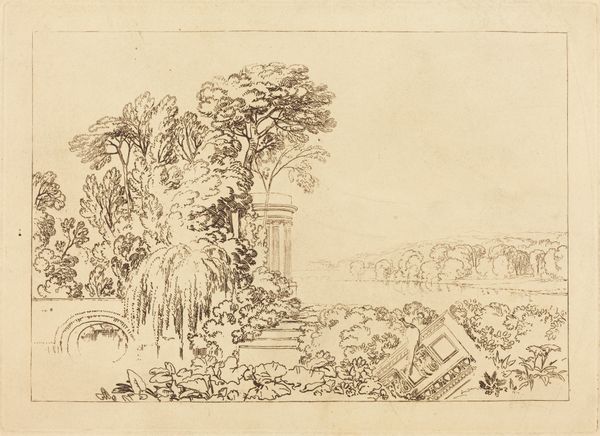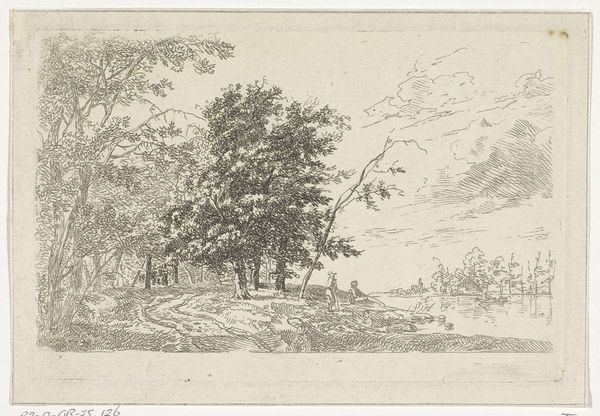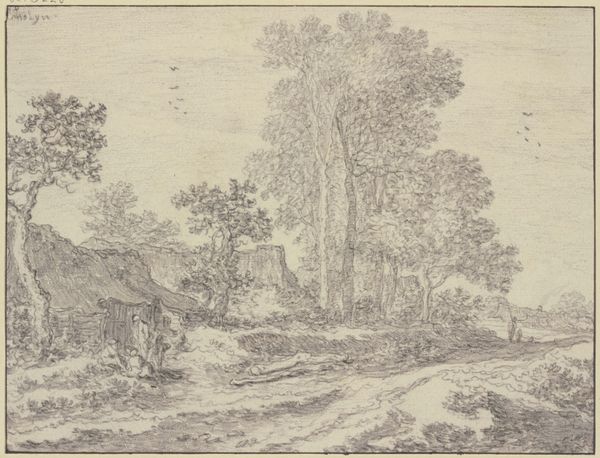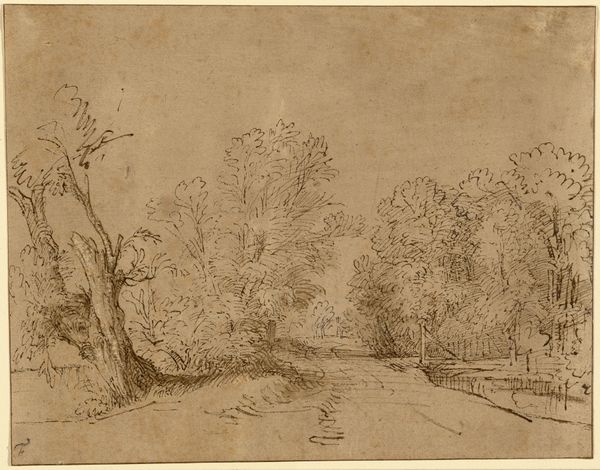
Parti fra Fredensborg have med "den forblommede antique" og Esrom sø i baggrunden 1742 - 1800
0:00
0:00
Dimensions: 166 mm (height) x 240 mm (width) (bladmaal)
Editor: This is "Parti fra Fredensborg have med \"den forblommede antique\" og Esrom s\u00f8 i baggrunden," a drawing in ink on paper by Thomas Bruun, made sometime between 1742 and 1800. It's quite detailed. I'm struck by the contrast between the natural setting and the clearly man-made structure in the center. How do you interpret this work? Curator: Well, consider the era. This drawing emerges during a time when the landed gentry were deeply invested in crafting idyllic landscapes. What appears ‘natural’ is, in fact, carefully curated. The "antique" folly – probably a monument celebrating a specific person, event, or ideal– placed in a controlled landscape— what does this say about power, ownership, and the control of narrative at the time? Editor: So, the romanticized view of nature is intertwined with displays of dominance? Curator: Precisely. Bruun captures a moment in which nature itself becomes a canvas for projecting status and ideology. These landscapes, while seemingly benign, are loaded with messages about who belongs and who gets to define beauty and history. Notice the people included in the scene; what do their inclusion signify? Editor: They seem like onlookers, maybe appreciating the view? Perhaps visitors or members of the estate? Curator: Or perhaps they highlight the act of witnessing and participating in the performance of power. The 'natural' beauty serves to legitimise a specific social hierarchy. This work speaks volumes about the social and political undercurrents of 18th-century landscape design and how we must critique these representations in art as they often reproduce social inequalities. Editor: I hadn't considered it in that light before. I guess I was initially drawn in by the prettiness of it all. Curator: And that's the seduction of these carefully crafted environments! By looking closer, and by considering the socio-historical factors, we can expose the subtle ideologies at play. It really underscores the importance of questioning whose perspectives are privileged and whose are excluded within seemingly harmonious landscapes. Editor: This makes me want to rethink how I approach landscape art. Thanks so much for your perspective!
Comments
No comments
Be the first to comment and join the conversation on the ultimate creative platform.
